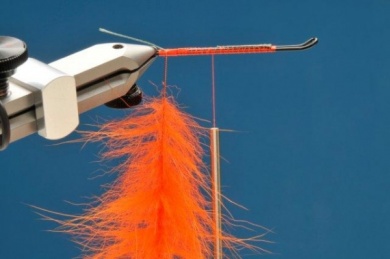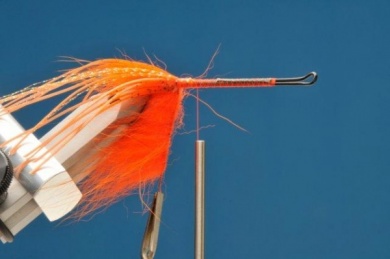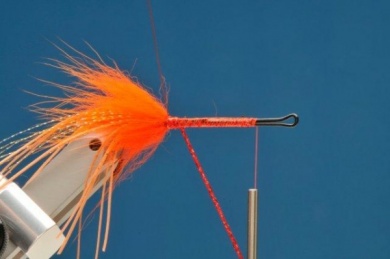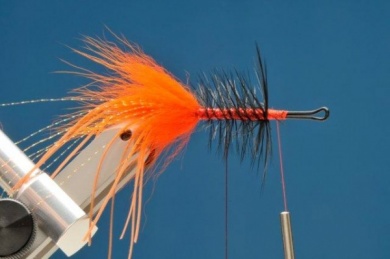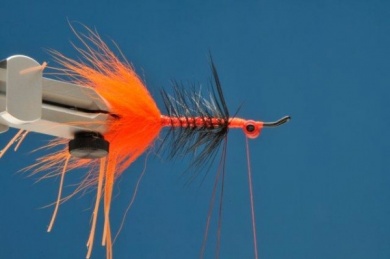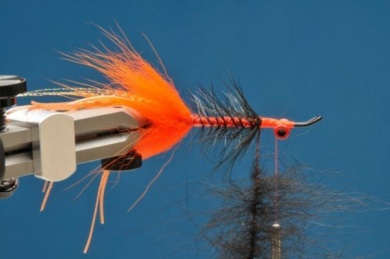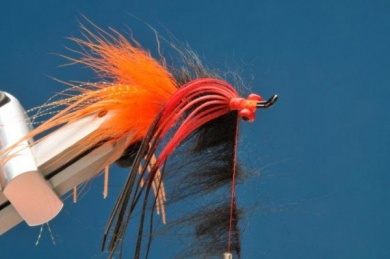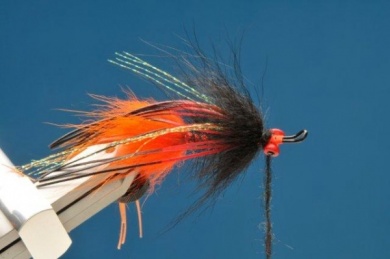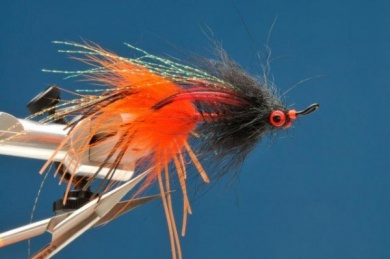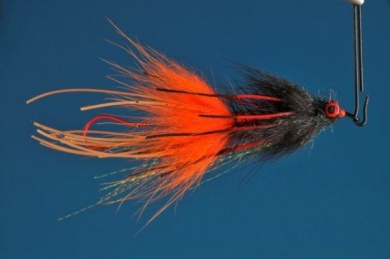Intruder-like flies have proven to be very effective with preying fish, especially with salmonids. From the original patterns tied with pheasant, heron, ostrich and other birds, many other variants which include synthetic materials. The possibilities to experiment are many; we can look for many diff View more...Intruder-like flies have proven to be very effective with preying fish, especially with salmonids. From the original patterns tied with pheasant, heron, ostrich and other birds, many other variants which include synthetic materials. The possibilities to experiment are many; we can look for many different swimming effects for diverse kinds of waters. A while ago, Intruders tied with rubber legs named “Squidro” gave me the idea for the “Hula Dancer” that thanks to the silicon rubbers and the fox collars produces more vibrations in the water than a fly made with feathers; this makes it ideal for high murky waters. In order that the fly becomes indestructible and easy to tie I thought of using wire loops for the body collars, I use the rubber only for the top side of the fly, instead of covering the whole perimeter, which avoids it from turning or spinning in the water. The middle section of the body has a hackle that balances the model. In small sizes and olive brownish colors it has worked like a charm in areas where there are pancora crabs, you just have to adapt the size of the eyes for different rivers. Usually it works with an inverse hook so it does not snag in the rocks.
Move the mouse over the image to zoom in the fly.
Touch the image to zoom in the fly.

List of materials
MaterialsThread: 6/0 or 8/0, fluorescent orange or red.Hook on the body: Waddington shank by Partridge, 45 mm or a salmón hook straightened and with a cut tip. It’s important to use a hook with an upwards pointing eye.Hook: Owner bait hook # 2 for big flies and # 4 for small ones. Preferably red.Rubber: flat, silicon, translucent ones in orange and red with black tips. Collars: fox tail, dyed orange and black. Mid section of the body: Mylar braid or broad holographic tinsel, red.Hackle: roost View more...MaterialsThread: 6/0 or 8/0, fluorescent orange or red.Hook on the body: Waddington shank by Partridge, 45 mm or a salmón hook straightened and with a cut tip. It’s important to use a hook with an upwards pointing eye.Hook: Owner bait hook # 2 for big flies and # 4 for small ones. Preferably red.Rubber: flat, silicon, translucent ones in orange and red with black tips. Collars: fox tail, dyed orange and black. Mid section of the body: Mylar braid or broad holographic tinsel, red.Hackle: rooster saddle, black.Ribbing: copper wire, 0.25 mm aprox.Flash: Krystal Flash, orange and chartreuseEyes: lead or bronze, painted.Head: fox dubbing or synthetic.
Steps
Step 1
Place the hook with a 60lb multifiber loop. The length of the loop goes with the length of the hook. More rigid multifibers, like Teflon ones, are better. Tie to the front and through the body up to the eye. Bend the rest of the multifibers to the back and tie towards the vise again, this locks the multifibers.
Cement along the shank with cianoacrilate. You can see the hook that will be placed in the loop. Check if the length of the loop is enough for the hook, before finishing the fly.
View more...Place the hook with a 60lb multifiber loop. The length of the loop goes with the length of the hook. More rigid multifibers, like Teflon ones, are better. Tie to the front and through the body up to the eye. Bend the rest of the multifibers to the back and tie towards the vise again, this locks the multifibers.
Cement along the shank with cianoacrilate. You can see the hook that will be placed in the loop. Check if the length of the loop is enough for the hook, before finishing the fly.
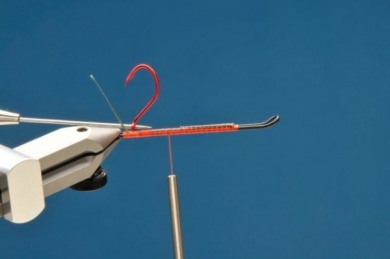
Step 2
Tie a copper wire loop of 0.25mm and place an orange fox tail bundle, thick as a pencil.
Separate the hair, tips pointing towards one side and the trimmed side towards the other (this side should be longer than the loop by 1 cm). Turn the wire loop until its tense, try to make a hackle or brush with the fox hair and the wire.
Step 3
Comb the brush to the back as if it were a hackle and wrap half its length, start right before the multifiber loop without touching it. Let the wire loop hanging, tie with the thread a dozen rubbers covering only the superior section of the body, and over them place 6 krystal flash fibers.
Step 4
Finish wrapping the loop, combing the hair to the back; tie the braid for the body, and the copper wire for the body ribbing and to press the black rooster feather.
Step 5
Wrap the body towards the front, tie the black feather by its thickest side, make a Palmer to the back. With the copper ribbing press the feather, taking the ribbing to the front as we tie in X figures the feather turns. This way the hackle lasts longer. Leave some space on the front of the fly, for the new hackle.
Step 6
Place the lead or bronze eyes below.
Step 7
Make a new brush with the copper wire, like the first one but with the black fox tail.
Step 8
Combing the brush hair to the back, wrap 3 turns tying the red rubbers so these cover only the upper 180 degrees of the fly. The combination of the rubber legs on top and the eyes below avoids the turning of the fly in the water.
Step 9
Add 6 strands of krystal flash and finish what remains of the brush towards the eyes. Then add some fox dubbing.
Step 10
Cover the space between the eyes with dubbing, then cement the tie. With a wire brush, comb the fly backwards.
Step 11
Then trim the legs and flash, there should not be two of the same length so they don’t stick together, then the fly will work much better.


